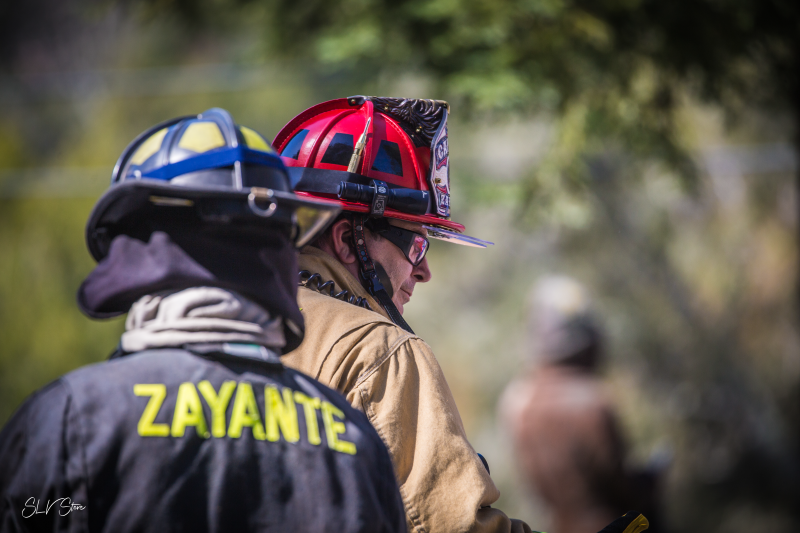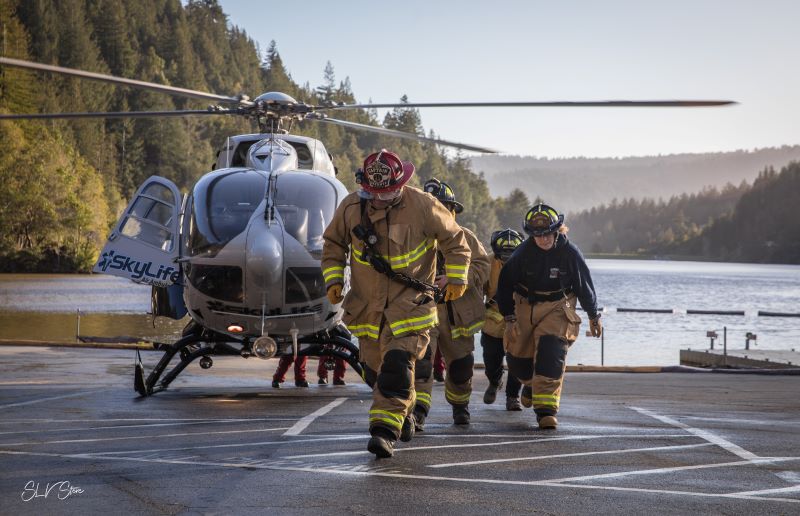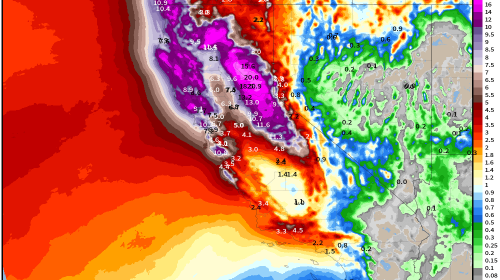Zayante Fire Seeks Community Support
By Robin Musitelli
Zayante Fire Department is struggling. The San Lorenzo Valley’s second largest department geographically but poorest in tax revenue, is fighting to keep a financial fire from getting out of control and will soon face a new threat — consolidation.
As mountain residents know, our local fire departments are much more than fire responders. They are intrinsically valuable in every aspect of mountain life, from clearing roads and fallen trees to picking up elders who have fallen from bed. They are our “town halls,” and home to many community events.

Most of the calls they respond to aren’t necessarily about fires. Of the 417 calls in Zayante last year 174 were for medical responses, 54 were for ambulance transport, and 109 were for hazardous conditions, according to department records. Yes, there was a house explosion in Lompico, a kitchen fire on West Zayante Road, and a structure fire in the upper Zayante neighborhood.
Fire Chief Jeff Maxwell explains the current predicament started in 1978 when passage of Proposition 13 capped property tax assessments. Zayante, which includes Lompico, had the lowest assessed valuation of the four SLV districts (Zayante, Felton, Ben Lomond, and Boulder Creek), says Maxwell. It subsequently has continued to get a smaller cut of property taxes. For comparison, the Zayante department gets $8 of property tax revenue for every $200 paid to Boulder Creek Fire.
The most impactful expense is a Worker’s Compensation premium of $99,500 which doubled in one year and is expected to increase 20% during each of the next two years because of a 2019 injury claim. Liability insurance is also up 20%.
Contracts for radio dispatch, County Auditor-Controller fees, payroll and tax administration are examples of third-party expenses that have been passed onto the district. Skyrocketing costs of diesel fuel, gasoline, electricity, natural gas, propane, and telecom services have outpaced revenue. Inflation reached 9% across all sectors while revenue is 2%, said Maxwell. The gap between revenue and expenses has left the district in deficit for the past four years.
Ironically, the department has also been hit by the lack of fires this past year. On big fires, CalFire contracts with local departments to send “strike teams,” a group of five local engines. Those responses are found gold to the small department budgets. While they usually send several strikes team, last year, Zayante sent just one. The payoff was just $26,000 to the department, while the bulk of the contract funds went to pay firefighters. That department share was used to respond to a deluge of calls from last year’s atmospheric river of storm damage, when firefighters cleared trees, roads, directed traffic, and helped residents start their generators. One strike team response is not enough.
Faced with job of balancing their budget, Zayante Fire board directors have been paring down. Firefighter positions have been cut or eliminated. Maxwell’s salary has been cut to $49,000, less than half of other valley chiefs’ salaries. Old equipment has been sold, and the thermostat has been set to 55 degrees at the station.
Meanwhile, the department is struggling to make the annual payments on a $400,000 wildland engine with five more years of payments.
Historically, the district has taken pride in asking taxpayers for “just enough” to buy new equipment, paid that off, and then asked for money for the next engine, says Director Mary Clark. Typically every four years the district would buy a new engine. That hasn’t happened since 2008. “We do more with less,” says Maxwell of the district’s reputation. “It’s not in the culture of the organization to reach out.” And this time they’re struggling to meet operating and capital costs, not just equipment costs.
Parcel Tax Option
Maxwell has assembled a task force of residents and fire district directors to consider the options. The best option, he says, appears to be a parcel tax. The amount that may be asked is still under discussion and Maxwell wants more feedback from the community before deciding to launch a campaign.
Consolidation Plan in the Works
Meanwhile, LAFCO, the county agency in charge of determining special district boundaries, is expected to release a study in early 2024 pushing consolidation of our four valley fire departments as a more efficient and cost effective way to deliver fire services.
Is consolidation the answer to the problems facing Zayante? Maxwell says no for many reasons.
Keep in mind that consolidation could mean a switch from a volunteer model to a paid staff model. How would this impact SLV?
Consider the recent consolidation of the Branciforte and Scotts Valley fire districts. Currently, SLV’s four districts combined receive approximately $3.8 million in tax revenues and respond from seven fire stations throughout the valley. Scotts Valley Fire with its paid staff of three each at two fire stations is funded at $8.9 million. And the Branciforte station is unstaffed and has been shuttered.
In contrast, SLV departments are predominantly volunteer agencies. Each valley department has a modest daytime staffing crew for low-risk emergencies, but the majority of the SLV force comes from volunteer rosters of local resident firefighters. There are approximately 130 volunteer firefighters in SLV, far outnumbering the resources of any of the agencies following LAFCO’s consolidated model.
The average volunteer firefighter called out in the middle of the night to assist you collects $12 per incident. The same firefighter extricating you from a vehicle accident – $12. Fighting a structure fire for six hours, $12. They’re paid once a year, just before Christmas.

Volunteers are all about their community. I would argue that the intangible benefits of the volunteer departments, not measured by LAFCO figures on dollars and response times, are huge.
The one-size-fits-all approach does not recognize that the local volunteers know our mountain “roads,” know their neighbors, and know the terrain of their districts. During the 2020 CZU fire, our locals were invaluable in their contribution to our neighborhoods and downtown cores.
Consolidation does not acknowledge that our fire departments are the civic, cultural, and social centers of our mountain communities. They are the hearts of the San Lorenzo Valley.

Robin Musitelli is a Brookdale resident and President of the Santa Cruz County Horseman’s Association.
Featured photo: Zayante Fire team with Skylife Air Ambulance at Loch Lomond | Photo by SLV Steve
***
Have a news item to contribute? The San Lorenzo Valley Post welcomes your Santa Cruz Mountains news, story ideas, photos, and letters. Send us an email.
Sign up for our newsletter to stay connected to news and events in the Santa Cruz Mountains.
The San Lorenzo Valley Post is your essential guide to life in the Santa Cruz Mountains. We're dedicated to delivering the latest news, events, and stories that matter to our community. From local government to schools, from environmental issues to the arts, we're committed to providing comprehensive and unbiased coverage. We believe in the power of community journalism and strive to be a platform for diverse voices.





